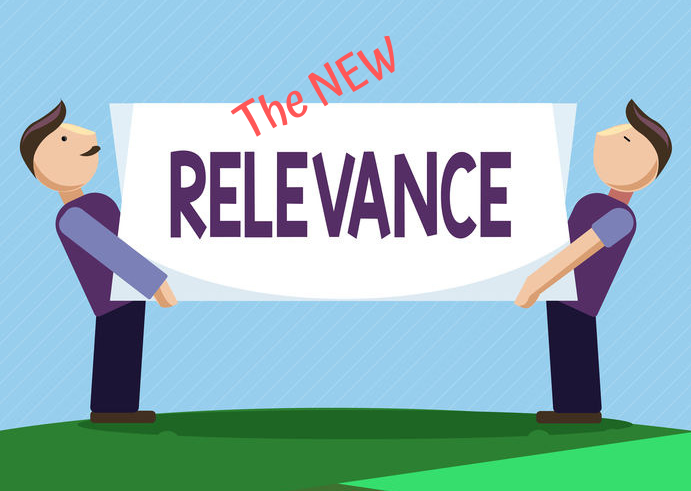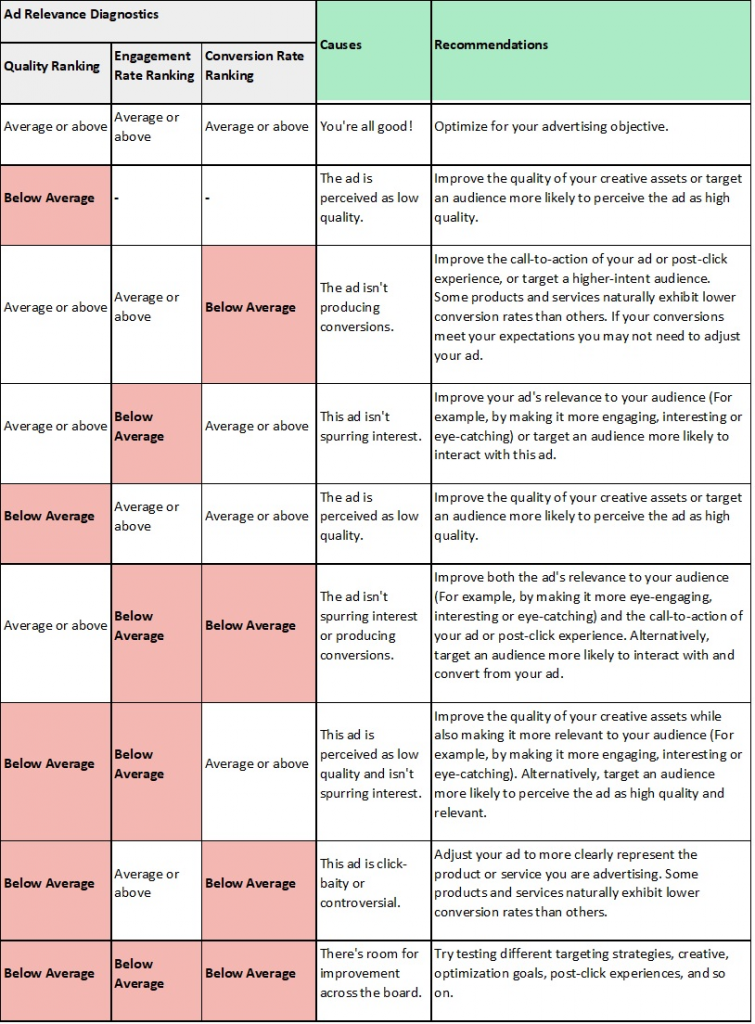
Back in April 2019, Facebook made some changes to the way they reported ad relevance in a move to offer greater clarity to advertisers and make optimization of ads more actionable.
Making relevance, well, more relevant, helps to ensure that the right people are seeing your ads and that those ads are offering up a better experience for Facebook, the consumer and the advertiser. Because when ads are targeted and created with the most possible relevance in mind, everyone benefits.
So What is Relevance Score?
In the past, the relevancy score was calculated based on interaction (feedback) that an ad received. Based on the ads objective, views, likes, conversions, and the rate at which these actions occurred. Negative feedback, such as hiding the ad or possibly reporting the ad would have a negative impact on the score.
The score was delivered based on a number between 1 and 10, 10 being the highest. It would get updated as the ad ran and feedback was provided. The higher the score meant the more likely Facebook was to show your ad in a user’s feed.
The grey area and need for improvement arose from the simple fact that advertisers were left very uncertain on how relevant the score was itself and what to actually do about it if it was low. Facebook needed to go from a relatively ambiguous, to a more granular approach to help evolve the platforms ability to not only offer its users content they want but help advertisers create, and continually, provide it.
In came the new system which brought clarity to the mix by breaking down relevance into three new diagnostic sections. The new Relevance Diagnostic uses information gathered once your ad set reaches 500 impressions.
The New Way of Relevance
Taking a more granular approach, as with most things, offers up far more insightful ways of improving quality. Consider this analogy: If a student were to get an average C grade across the board for all their years’ studies, what would that tell them? Literally nothing. They would have no idea where they needed to look to improve, leaving them guessing and very likely frustrated. Reporting ‘grades’ on a per subject basis, per assignment basis, even on a basis that relates how well one’s doing in comparison to their peers, however, allows for clarity in what’s working and what’s not in order for improvements to be made.
This new way of relevance is essentially the same.
As Facebook states, ‘When used together, ad relevance diagnostics will help advertisers understand whether changes to creative assets, audience targeting or the post-click experience might improve performance.’
This new, more robust, trio of metrics allows a high level of specificity so that advertisers can take the necessary actions for optimal results.
Quality Ranking – This metric measure’s the ad’s quality compared to other ads competing and targeting for the same audience
Engagement Rate Ranking – In the same way as above, the metric measures the ads expected engagement rate in comparison with other ads competing and targeting the same audience
Conversion Rate Ranking – Indicates the ad’s anticipated conversion rate compared to other ads competing and targeting the same audience.
Possible values for quality ranking are (where average represents the 35th to 55th percentile):
- Above Average
- Average
- Below Average (Bottom 35% of ads)
- Below Average (Bottom 20% of ads)
- Below Average (Bottom 10% of ads)
For example, a quality ranking of Below Average (Bottom 20% of ads) means that your ad’s perceived quality was among the lowest 20% of ads competing for the same audience. At least 80% of ads competing for the same audience were perceived as higher quality. help understand what each of these numbers means, Facebook breaks it down as follows. *Source Facebook
So now that we understand what the score is all about, what do we do with it and how do we achieve greatness?
5 Suggestions for Higher Ad Relevance
Quality Content
Facebook wants it’s ‘storefront’ to look nice and be relevant just like any other business. It wants its own audience to have a positive experience and not be inundated with sub-par content. So Facebook keeps a tight grasp on what users are seeing. If an ads quality (visual quality, copy quality, mobile optimization, etc.) is great, then the ad will get ‘air time’. If visuals are grainy, the copy is long-winded and unclear, the ad will get shown to far fewer people. Keeping your content tight, sharp and relevant to your ad will help the Quality Ranking.
The Right Audience
The first sign of the wrong audience is little to no engagement. As in all marketing, knowing your audience is the key to all success. And with the many option for targeting (location, demographics, behavior, and interests) layering down on the audience that you’re after is relatively simple.
Lookalike Audiences make it even more simple if you have a Facebook following currently. The Facebook tool allows you to create a new target audience that looks exactly like the audience who has already chosen to follow and engage in your page. This will definitely work in your favour when it comes to Engagement Rate.
Engagement Encouragement
Your ad must have a purpose. Your audience must know what to do. Having positive interaction is key. By creating a clear Call-to-Action (liking, commenting or clicking through) helps your audience know what their part is. Getting them to engage by posing a relevant question that can be answered by liking your page, liking a post, or by commenting…or answering that question for them and encouraging them to ‘Learn more’ or ‘Read on’ for help. For the score to be high, action must be taken. Action is hitting on the Engagement Rank as well as the Conversion Rank.
Video
People will make decisions within the first few words of an ad. Even within the structure of the wording in an ad. Video is a little different in that engagement takes place over a longer period while they absorb what’s occurring in the video. It captures attention in a very different manner than text ads, and with the right creative, can inspire action at a far greater frequency. It’s one thing to see a photo of a product before making a decision, but when that product is suddenly brought to life and can be seen from ‘all angles’ it can create quite a different experience. ‘Facebook executive predicted that their platform will be all video and no text by 2021. (Quartz)’. It’s hard not to see the value of video when the whole platform is predicted to be moving in that direction.
Frequency and Timing
No one likes the idea of being blocked. You should feel the same about your ads. Showing ads too many times can lead to ‘ad fatigue’ which will see a user blocking or hiding the ad. This has a very negative impact on relevancy. Excluding people who have already ‘converted’, changing content regularly and simply reducing frequency, can help keep your audience from being frustrated.
Keeping that in mind, timing has huge relevancy as well. As previously mentioned, this requires knowing your audience. Some businesses have audiences that would be present in the wee hours of the evening, while others it would be during morning coffee. Knowing when your target audience is most likely to be logged in and engaging, along with Facebook Analytics, will help you understand what timing works best for your audience.
Understanding it all though in real terms if you’re not a Facebook Ad Specialist, can be rough. Following is a chart that contains different ranking scenarios and what they may mean for your ads.

It can be a big task to understand how all of these methods work in conjunction with each other and work in conjunction with bringing the cost of the ads down. It takes time and experience to be able to pump out campaigns that are effective and produce results.
As mentioned in previous posts, you can take on the task manually and sort through the How To’s on you own, you can put part of your ad budget towards software to help you manage your campaigns and hopefully build them so they are firing on all Relevance cylinders. Or you can work with a digital marketing agency who knows all the ins-and-out and tricks of the trade so that relevance score isn’t something you need to spend your time worrying about. The choice is yours.
Succeeding with online advertising can be challenging but with all of the knowledge and tools out there today, it doesn’t have to be.

Leave a Reply